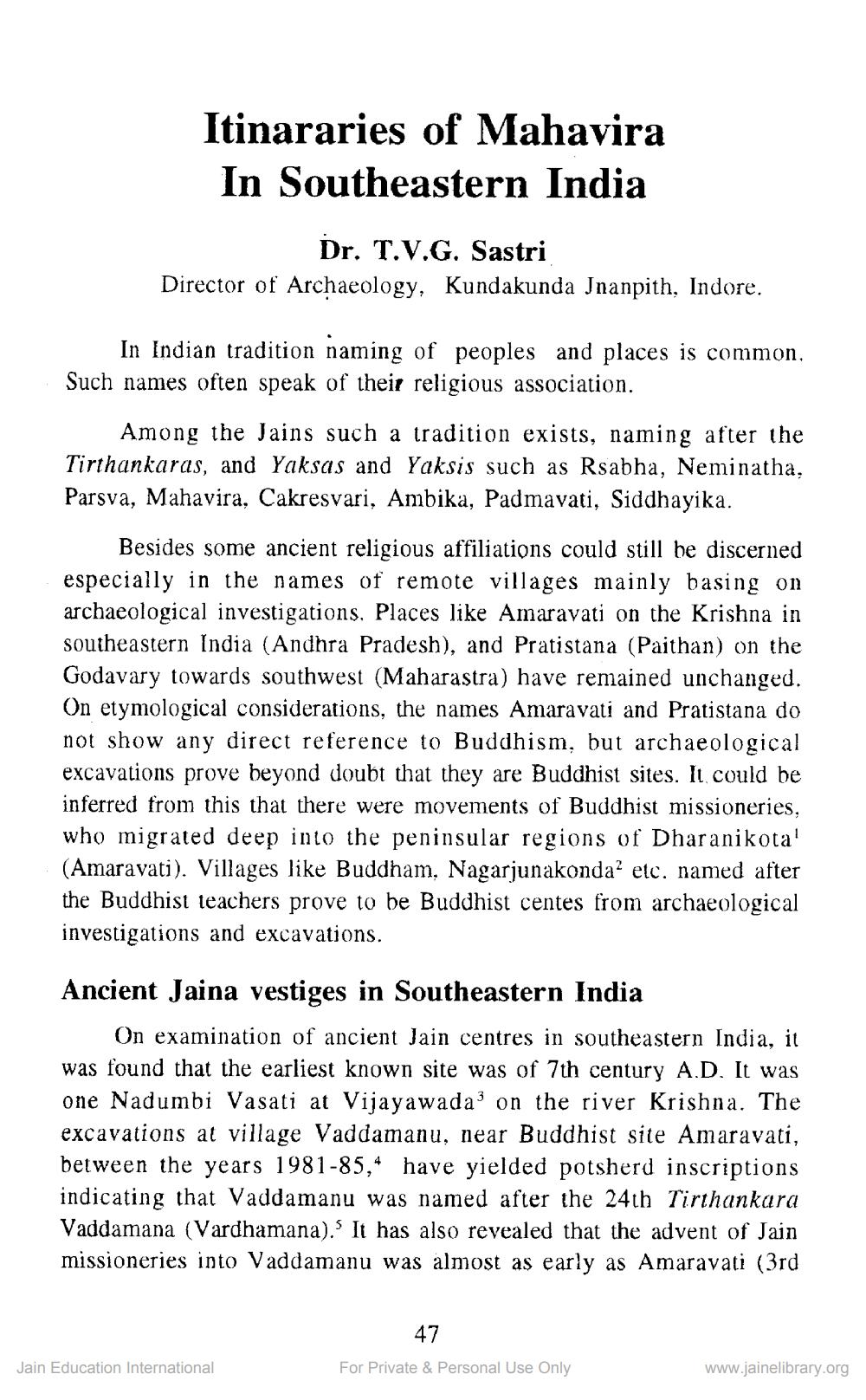________________
Itinararies of Mahavira In Southeastern India
Dr. T.V.G. Sastri Director of Archaeology, Kundakunda Jnanpith, Indore.
In Indian tradition naming of peoples and places is common. Such names often speak of their religious association.
Among the Jains such a tradition exists, naming after the Tirthankaras, and Yaksas and Yaksis such as Rsabha, Neminatha, Parsva, Mahavira, Cakresvari, Ambika, Padmavati, Siddhayika.
Besides some ancient religious affiliations could still be discerned especially in the names of remote villages mainly basing on archaeological investigations. Places like Amaravati on the Krishna in southeastern India (Andhra Pradesh), and Pratistana (Paithan) on the Godavary towards southwest (Maharastra) have remained unchanged. On etymological considerations, the names Amaravati and Pratistana do not show any direct reference to Buddhism, but archaeological excavations prove beyond doubt that they are Buddhist sites. It could be inferred from this that there were movements of Buddhist missioneries, who migrated deep into the peninsular regions of Dharanikota' (Amaravati). Villages like Buddham, Nagarjunakonda? etc. named after the Buddhist teachers prove to be Buddhist centes from archaeological investigations and excavations.
Ancient Jaina vestiges in Southeastern India
On examination of ancient Jain centres in southeastern India, it was found that the earliest known site was of 7th century A.D. It was one Nadumbi Vasati at Vijayawada on the river Krishna. The excavations at village Vaddamanu, near Buddhist site Amaravati, between the years 1981-85,4 have yielded potsherd inscriptions indicating that Vaddamanu was named after the 24th Tirthankara Vaddamana (Vardhamana). It has also revealed that the advent of Jain missioneries into Vaddamanu was almost as early as Amaravati (3rd
47
Jain Education International
For Private & Personal Use Only
www.jainelibrary.org




